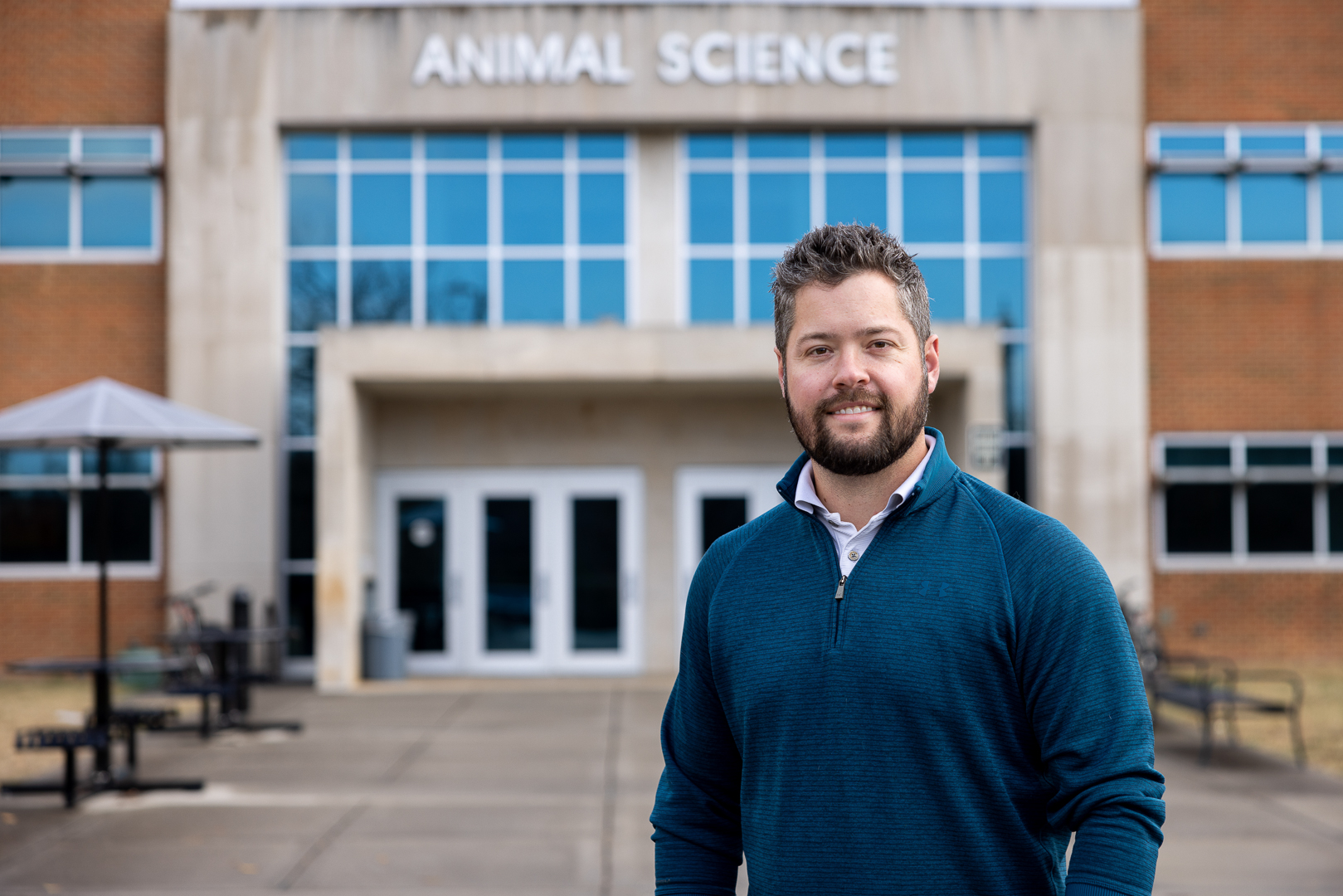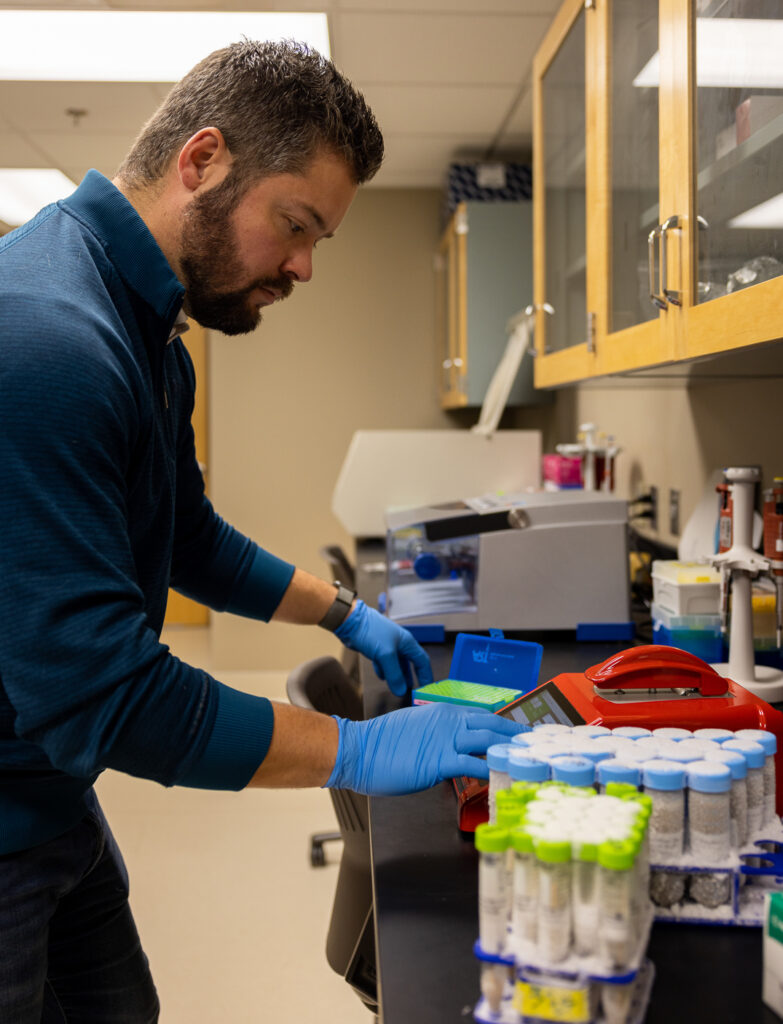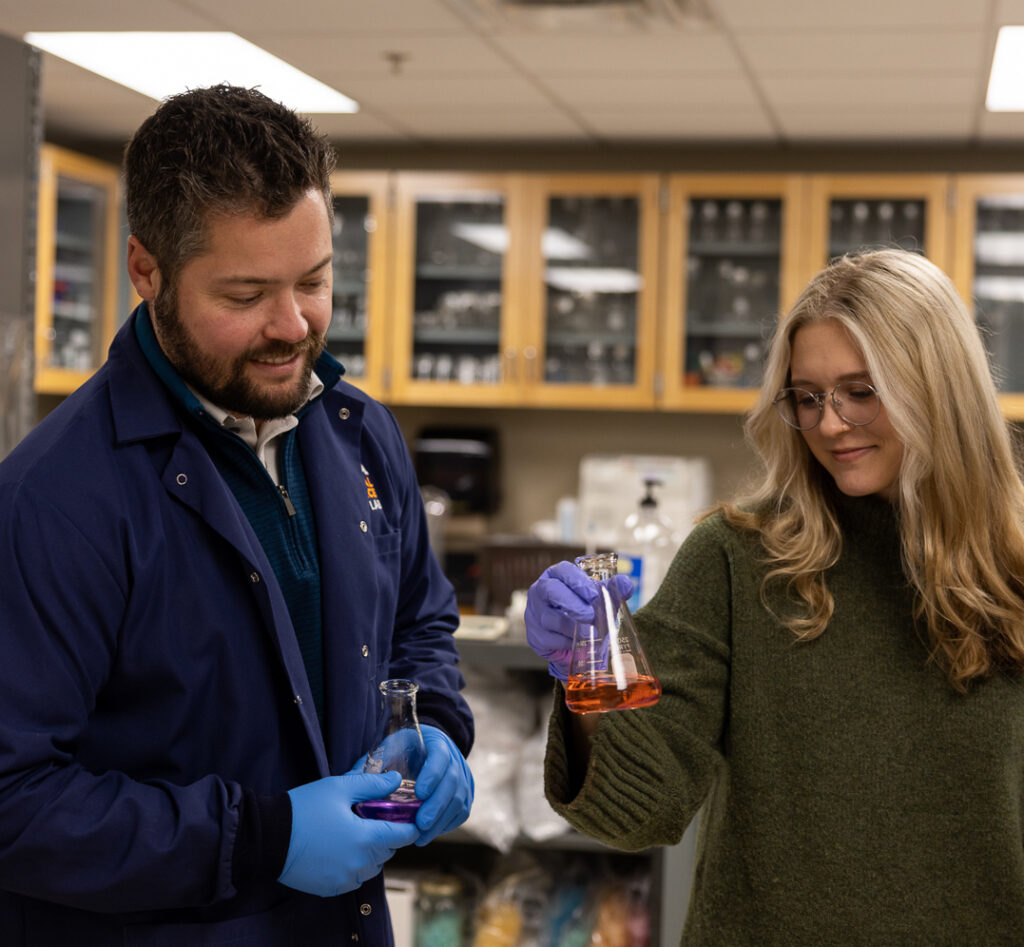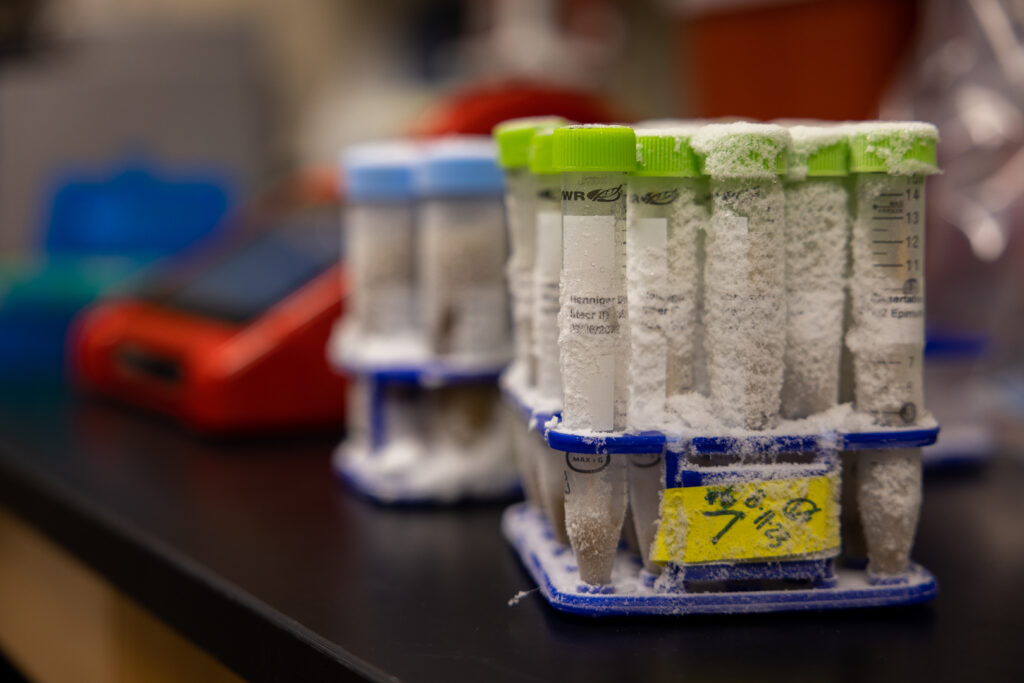
Associate professor of animal science studies gut microbiology of beef cattle to help increase feed efficiency and improve overall nutrition
Where are you from, and how did your career lead you to UTIA?
I am originally from east central Illinois.
My career path wasn’t typical, but very rewarding. While pursuing my PhD in microbiology at Purdue, my focus on analyzing microbiomes garnered attention from animal scientists seeking assistance in understanding gut microbes across various animal species. This collaboration led me to continue work into gut microbiology in the context of livestock. I then secured a post-doctoral position at the US Department of Agriculture’s (USDA) US Meat Animal Research Center (USMARC) in Nebraska, where I conducted research on microbial influences on feed efficiency in finishing beef cattle. This experience at USMARC ultimately brought me to UTIA.
What is your main research focus, and why it is important?
My research program is primarily focused on the microbiological mechanisms explaining differences in feed efficiency, enteric emissions, and overall nutrition of grazing beef cattle. My work also focuses on the development of the rumen microbial community (rumen microbiome) and how it impacts the growth of beef cattle.
The significance of forage-based cow-calf production lies in its ability to transform human-inedible forages from non-arable land into a valuable source of high-quality protein through the activity of rumen microbes. Given that nourishing the rumen microbes directly contributes to the animal’s nutrition, cow-calf production stands out as the livestock sector with the most substantial potential to mitigate emissions and enhance productivity.

Why did you choose the field of animal science?
Life often leads us down unexpected paths, and I could not be happier with the trajectory it has guided me. Through my involvement in animal science, I have had the privilege to observe and apply the results of my research, contributing to advancements in agricultural research and the sustainable use of resources. This work aims to benefit not only livestock but also humanity and the environment.
What is the most fulfilling aspect of the work you do?

Mentoring both undergraduate and graduate students, fostering a heightened enthusiasm for animal science, represents the most rewarding aspect of my work. It is essential to cultivate a new generation of dedicated and creative young animal scientists for sustained progress and innovation across various domains of animal science. Witnessing the growth of these aspiring scientists, the discovery of a research passion, and the subsequent positive impacts they create after departing from UTIA, represents the ultimate gratification.
What has been your proudest moment while working at UTIA?
Witnessing my students make significant strides in their research, marked by publications and awards, stands out as the proudest moments in my tenure at UTIA. The dedication and hard work these students put into their research, resulting in achievements like publications, brings a sense of gratification and signifies recognition among their peers. Additionally, I take pride when these students receive awards for their diligent efforts. Their hard work is commendable, and it’s only fitting that they receive the credit they deserve.
What is one of your favorite experiences you have had in the UTIA Department of Animal Science?
Lunch. Our camaraderie and collaboration are fostered at lunch time. We have found that having this time to meet allows our faculty and staff to build meaningful connections, facilitating effective collaboration and partnerships in research, teaching, and Extension. Engaging in open communication and cultivating a sense of community during these moments has proven to be rewarding on various fronts.
What is a project you are currently working on that you are excited about?
We are currently working on a USDA funded project examining the host genetic control of the rumen microbiome and its role in feed efficiency phenotypes. Our objectives are to determine the heritability of the rumen microbiome and identify genomic regions controlling ruminal microbial features, such as microbial diversity, microbial abundance, and functional networks. Understanding the host genetic control of the rumen microbiome may empower downstream applications to enhance genome and phenotypic predictions for feed efficiency and other sustainability traits in beef cattle.

What do you like to do outside of work and/or what is a fun fact about yourself that your colleagues and students wouldn’t know?
Music is a passion that extends beyond my professional life. I have been playing the piano since the age of 4. While my university major was Biology, I originally was enrolled in a music degree, with a focus on the cello. I also spent my first year at Bradley University nationally touring with the Bradley Chorale. Even today, I prioritize playing the piano daily.
